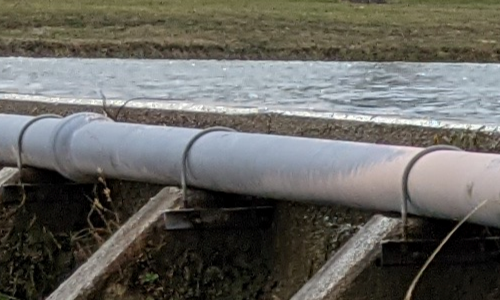Using Google Earth Engine, Texas will be able to focus on Big problems and find solutions faster and smarter without worrying too much about data and compute. Several organizations and individuals are learning this new cloud GIS tool to analyze the spatio-temporal changes in Texas with high accuracy.
Google Earth Engine Workshop was organized in the Austin, Texas offices of Google on Jan 17, 2023, by Nooglers Jack O’Connell, and Jignesh Patel. Google cloud geographers Brady Allred, Kel Markert, and Jeremy Malczyk gave hands-on training on the Google Earth Engine and Big Query GIS for Data Analysis.
The event was attended by geospatial experts from various Federal, and State agencies like USGS, BEG, TNRIS, TxDOT, etc. A few individuals from private companies, startups, and universities were also present.

Google Earth Engine is not a traditional GIS software. It works entirely from your web browser and accesses data from Google Cloud servers. Even the way it analyses data is the opposite of desktop GIS’s rigid way of downloading data and then running an analysis. Earth engine computes backward. Now, you don’t have to download the input data, you can just share the results. While most functions have similar names in Earth Engine and GIS, Zonal Statistics in GIS is called Reduce Regions in Earth Engine.
Google says the purpose of the earth engine is to let users focus on questions alone, without worrying about the data and computing. The goal is to turn pixels into insights for decision-makers.

Researchers have asked complex questions like how much grass grows in the USA by using the earth engine and the answer came out to be a staggering 596 M tons of grass grows in 2021 in the USA. Over a fifth of that or 117 M tons of grass grows in Texas alone.
“Everything is Big in Texas, including our Geospatial Data needs. Traditional software running on Workstations and Laptops have limitations when it comes to analyzing millions of pixels and hundreds of thousands of land parcels.” - Sanjay
Because grass can also act as the fuel that causes forest fires. The same data and research has been used to predict forest fires. Rangeland Analysis Platform is one such tool built using and on top of Google Earth Engine.
While Earth Engine boosts extreme computation capabilities and several Peta byte of storage it was sad to hear that Google does not share the default map from google maps satellite view due to restrictions from their satellite data vendors. This alone could have been a huge moat in accelerating Earth Engine adoption since traditional GIS software like ArcGIS also does not have access to the magnificent Google maps data.
Using data not available on Earth Engine and keeping it private within your research group definitely adds value to the idea of being a cloud-native organization. Nooglers quickly pointed out Earth Engine’s capability to import commercially available datasets from Maxar and daily datasets from Planet.
Earth engine has a huge community of non-google developers who have created extensions and Python APIs to add more functionalities than what google offers in-house. Some notable mentions were Geemap and Open Earth Engine Extension

Attending a workshop like this shows you the paradigm shift that is happening from desktop to cloud GIS. It opens you up to learning about concepts that are highly advanced like Feature collection, Cloud Optimized Geotiff, Functional Programming, Big Query geospatial for Vector data, and much more.
Every time you open Google Earth Engine it feels like the first time you ever used GIS. It’s the same adrenaline rush and the excitement to do something new that has never been done before.
Here’s a link to the Event reported in this post: https://rsvp.withgoogle.com/events/earth-engine-workshop-austin


